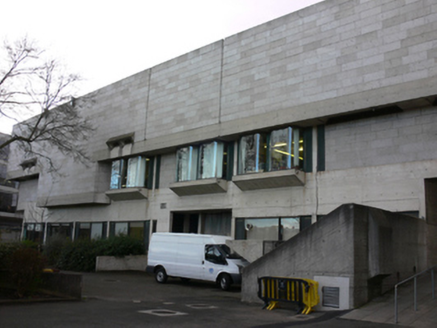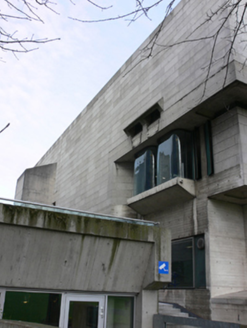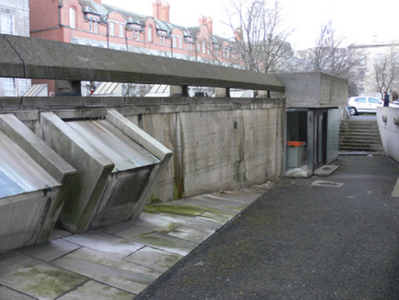Survey Data
Reg No
50020393
Rating
National
Categories of Special Interest
Architectural, Artistic, Historical, Social, Technical
Original Use
Library/archive
In Use As
Library/archive
Date
1960 - 1970
Coordinates
316208, 233996
Date Recorded
26/03/2015
Date Updated
--/--/--
Description
Detached eleven-bay two-storey library, completed 1967, having projecting basement. Flat roof with angled rooflights concealed behind low concrete pediment. Concrete walls with timber shuttering marks and projecting vent hoods. Square-headed oriel and triangular window openings, with bronze framed sheet windows, and some moulded glass windows. Square-headed door openings with single- and double-leaf glazed metal framed doors, those to front set in recessed porch. Interior with central double-height reading room, having desks, storage, counters and gallery rails of solid white concrete.
Appraisal
Named after Bishop George Berkeley (1687-1753), this highly visible Brutalist-style library has come to represent the modern Trinity College in much the same way as the Old Library and Parliament Square represent its history. The project was the result of an international competition won by Paul Koralek of Ahrends, Burton & Koralek. The jury report stated “The design is consciously modern in style and construction, and the author shows enough good taste and judgement to encourage confidence that, when built, the new library will be a notable addition to the architecture of the college.” It was chosen for its ability to connect with existing structures, its monumental presence, and its magnificent natural internal lighting. The projecting basement, on which sits Alexander Pomodoro’s Sfera con Sfera (50020519), makes the library entrance into a raised stage which dominates the surrounding landscape. The board marked concrete adds textural interest while acting as a reminder of the interplay between natural and made man materials. Pleasingly juxtaposed with the nineteenth-century Museum Building and the Old Library, the Berkeley Library displays a confidence in modern architecture which is rarely seen to such good effect in Ireland, and is among the finest twentieth-century buildings in the country.

























